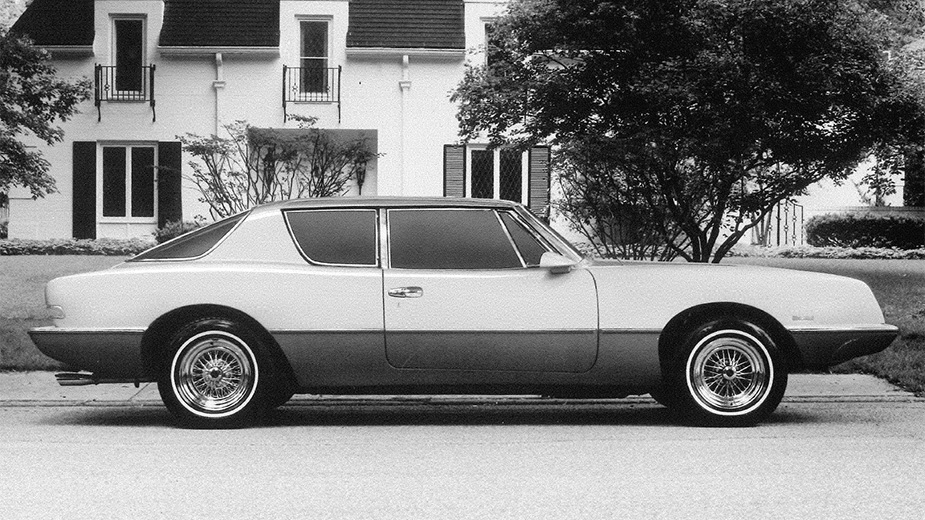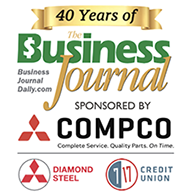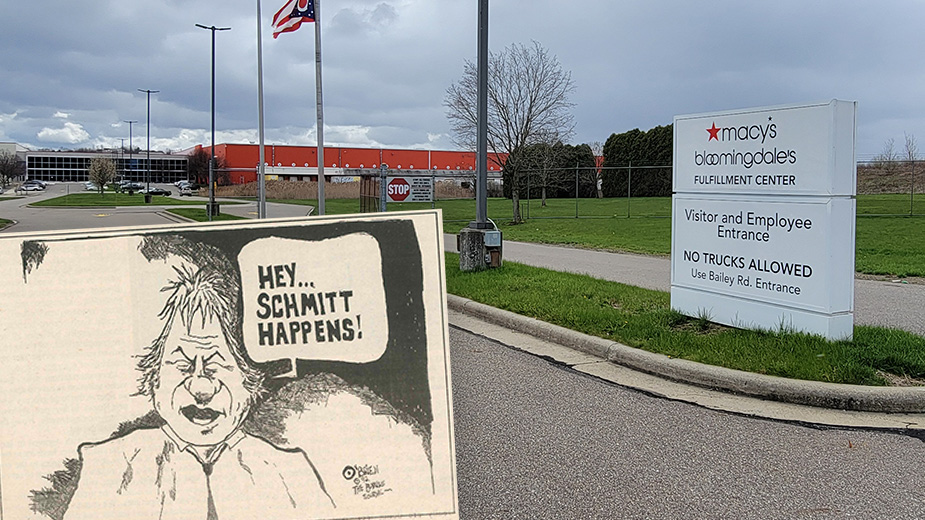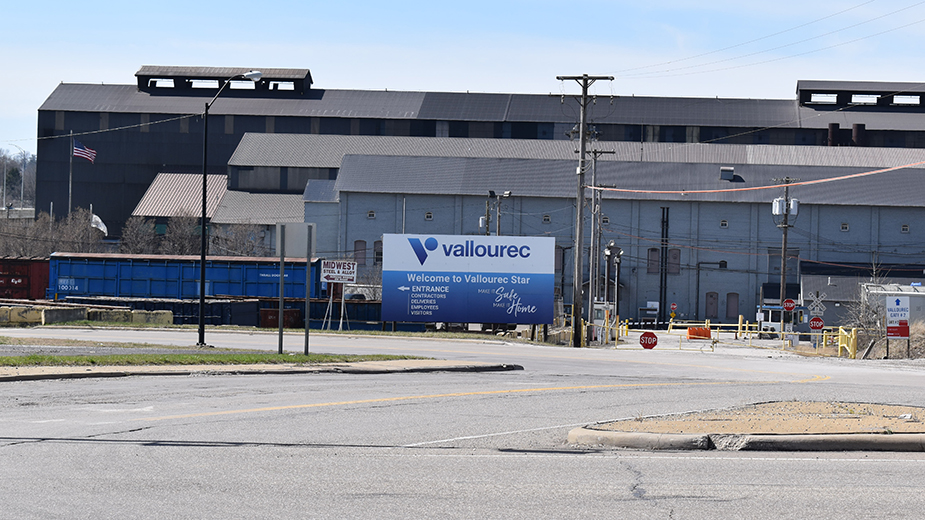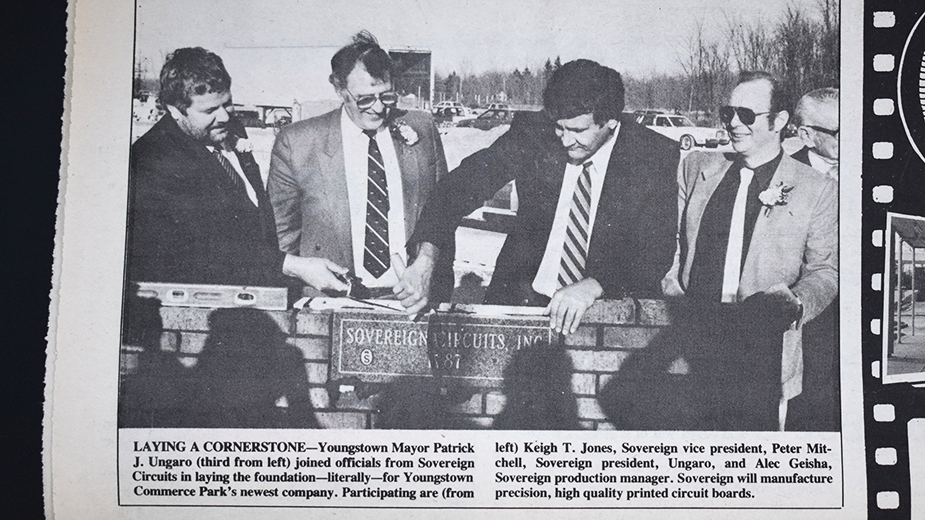Avanti’s Mahoning Valley Venture Proved to be Short-Lived
YOUNGSTOWN, Ohio – The headline of the Youngstown/Warren Business Journal’s MidDecember 1990 editorial summed up the situation: “Avanti’s Demise Comes as No Surprise.”
The saga of the New Avanti Motor Corp.’s short-lived presence in the Mahoning Valley began a few years earlier, with a March 6, 1987, story in the South Bend (Ind.) Tribune reporting that an “imminent move” to Youngstown was “groundless.”
Nonetheless, that provided fodder for local news outlets, The Business Journal reported in our MidMarch 1987 edition.
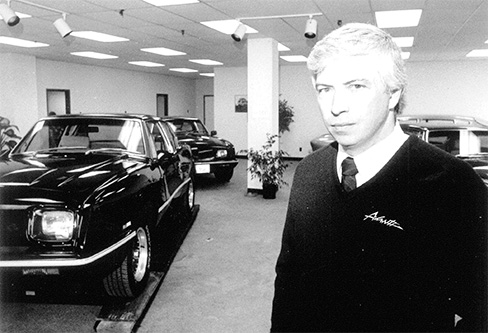
The story carried the headline “Avanti’s Possible Move to Area – Now is the Time for Media ‘Hype.” It reported that New Avanti’s chairman, Michael E. Kelly, confirmed that his company was looking for a site to produce a four-door model of its hand-built sports car, and that he had visited sites in the Mahoning Valley.
“Youngstown is still in the realm of possibility,” Kelly said.
Kelly announced during a televised media event April 30, 1987, at the Holiday Inn Metroplex that Avanti would take over a major portion of The Cafaro Co.’s Ross Industrial Park. There it would build two models – the new Avanti L, known as the Avanti limousine, and the Avanti LTS, a luxury touring sedan – and employ 450 workers. Members of the Cafaro family also would invest in the company, which was expected to produce its first cars in Youngstown in the fall.
John Moliterno, who had become president of the Youngstown Area Chamber of Commerce the year before, remembers how the Mahoning Valley was still recovering from the loss of heavy industry jobs that came with the waves of steel closings. People in all walks of life were affected by those job losses.
“When Avanti was announced, it was exciting because now we’re talking about new manufacturing jobs here in our own town,” Moliterno recalls. Beyond those jobs, the announcement “gave us a shot in the arm and additional credibility as a community” to other prospective employers looking at the area.
Coverage of the Avanti story in the months that followed was wide ranging. A story in the June 1987 Business Journal focused on where an Avanti dealership would be located, a $1.5 million low-interest state loan to finance the addition of an assembly line at Ross Park, an application for demolition funds and an investigation by the Ohio Attorney General’s office looking into Kelly’s previous dealings in the ethanol industry.
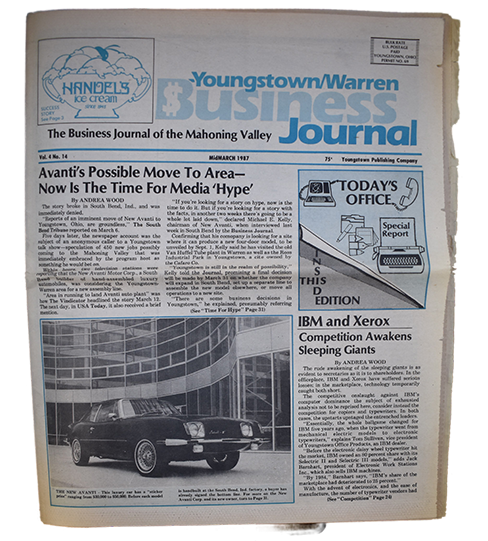
“Everything that has come to the surface is old news,” Kelly told local reporters, in response to a May 24, 1987, Cleveland Plain Dealer article about his ethanol dealings.
In our MidAugust 1987 edition, we reported that more than 11,200 applicants had shown up hoping to land one of the 165 production and clerical jobs that the plant initially was offering. The first of those applicants had arrived at the Ohio Bureau of Employment Service’s Youngstown office at 8:45 p.m. Aug. 9, the night before applications opened. Production of the four models slated to be built at Youngstown – manufacture of the sports coupe and convertible was to shift here from a portion of the old Studebaker factory in South Bend – was to start Sept. 2. Employment was projected to hit 450 workers by spring 1988.
In October 1987, the Business Journal reported on the opening of the first New Avanti dealership on Wick Avenue, and businessman Sam Covelli’s purchase of the first vehicle to come off the Ross Industrial Park production line. A commercial advertising the brand that also featured local landmarks appeared in major U.S. markets during the Sept. 25 episode of the CBS drama “Dallas,” and an Avanti was driven by one of the show’s characters during the episode.
Another story in the same edition reported on the new plant’s workers, a mix of Valley residents who had secured positions at the plant and workers who had transferred from South Bend, as models started there were being completed on the Youngstown line.
“I thought it was a beautiful move, for me and for the company,” Charles Coleman, a grinder in the body shop who had accepted a transfer offer, said. “This is an opportunity I never had before.”
Body shop supervisor Dan Shepherd, another transplant, acknowledged the South Bend plant was in poor condition.
Among the more baffling developments in the Avanti saga, reported in the same story, involved a self-inflicted wound by Kelly. Addressing a Sept. 18, 1987, meeting of the Youngstown Press Club attended by representatives of local media outlets, including the Business Journal, Kelly had declared that he would close the Avanti plant rather than allow it to unionize.
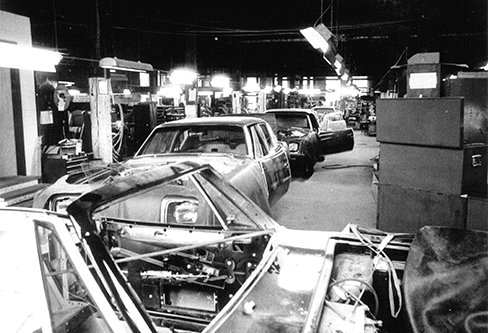
“We operate with a team concept,” he said. “Unions don’t understand team concepts. They have management and they have labor.”
Those comments and others, which were widely reported, prompted an investigation by the National Labor Relations Board. A story in our MidJanuary 1988 edition reported on the results of that investigation, a settlement that permitted distribution of union literature at the plant.
Nor was that the only hiccup for Avanti. The February 1988 Business Journal reported on barrels of what was suspected to be hazardous waste left behind at the South Bend plant site.
By the middle of 1988, New Avanti was manufacturing 24 cars per month and was trying to expand dealer outlets. The company’s overall performance was about where Kelly expected it to be, and some departments were performing ahead of projections, he said in the MidJune 1988 Business Journal.
“The quality of the car is greater than I had expected it to be at this point,” Kelly said. “The engineering, research and development are well ahead of what I had expected them to be at this point.”
Any optimism would prove to be short lived. The September 1988 edition reported on Kelly’s interest in Puma, a Brazilian sports car, including potential plans to manufacture an older model at the Albert Street plant.
Our MidSeptember 1988 edition reported that Kelly had ended his New Avanti partnership with the Cafaro Co. and, after resolution of a rights issue, was moving on to head up Puma Motor Corp., another limited production car manufacturer he said he intended to locate in the Valley.
Those plans never came to pass, as reported in February 1989, as Kelly moved on to other interests. The MidDecember 1990 editorial summarized the saga of New Avanti in the Mahoning Valley, as it reflected on news reports of the manufacturer’s impending demise elsewhere. Although the company never met its job-creation goal, the editorial lauded the Cafaro Co. and especially J.J. Cafaro, who had taken over hands-on operations after Kelly’s departure.
J.J. Cafaro “set an example as a businessman who was not afraid to put his money where his heart was,” we wrote. His investment was around $15 million.
At the same time, we lamented how style outweighed substance. “The region would have been far better served if Avanti’s self-proclaimed success story had not been exaggerated into a myth that characterized the carmaker as the shining example of steel-town rebirth,” the editorial concluded.
Avanti never was going to be the “big job creator” that General Motors was locally, “but it was something that we were able to use to sell to other entities to look at our Valley,” former chamber CEO Moliterno muses, decades later. “And that’s no small thing.”
Pictured at top: Avanti’s Luxury Sport Coupe offered owners “a combination of uniqueness and individuality.”
Copyright 2024 The Business Journal, Youngstown, Ohio.
